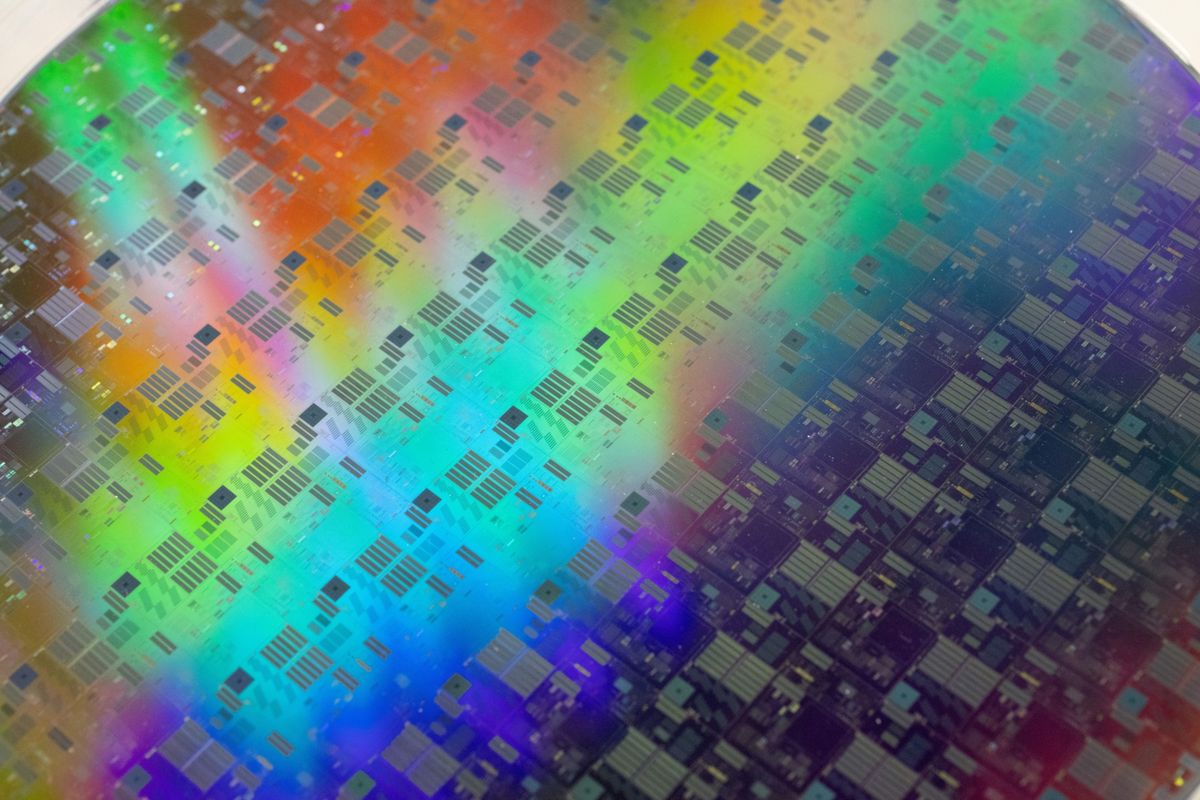
By John M. Donnelly CQ-Roll Call
When a massive container ship called the Ever Given got stuck sideways in the Suez Canal for nearly a week this March, it caused a traffic backup in oceangoing commerce, costing the world about $60 billion, by one estimate.
After days of salvage experts trying to dig the ship out, the Ever Given was ultimately freed on March 29, thanks to a big assist from a higher-than-usual tide. The Ever Given’s saga was the latest reminder of how the world economy can be held hostage by a single point of failure in a global supply chain that is more precarious than most people knew.
The production of tiny semiconductors, one of the most critical products in the world, is likewise a chokepoint because nearly 90% of them are made by a handful of companies in Asia. A bipartisan chorus in Washington – including President Joe Biden – says American dependence on just these few sources for its economy and its military is dangerous. An ongoing shortage of chips – due partly to a pandemic-driven surge in computer usage – that has hobbled the U.S. automotive industry had strengthened their case. The Ever Given crisis fortified it further.
“As the global economy grows more interconnected, it is imperative that the U.S. reestablish leadership in the strategically important semiconductor industry,” California Democratic Rep. Doris Matsui said in a statement. “The future of innovation in 5G networks, health care, and computing will hinge on the availability of state-of-the-art semiconductors from trusted sources.”
But rebuilding the U.S. chip-making industry will not be easy or cheap. The United States is far behind in the race and may never catch up, some say, and yet Washington is poised to spend some $37 billion this year alone, without first developing a strategy and a plan for achieving it, the critics argue.
Supporters of the new subsidies counter that the issue has been studied to death and that so-called CHIPS Act legislation passed last year in the fiscal 2021 defense authorization act is a great start to solving the problem.
The debate is about to heat up.
“It should be a national priority to level the global playing field and strengthen U.S. chip production and innovation,” David Issacs, the Semiconductor Industry Association’s vice president of government affairs, said. “That’s what folks on the Hill, in the Pentagon and in the White House are recognizing.”
Demand for chip manufacturing is expected to grow 56% in the next decade, according to the association.
“The sole question is: Is that growth going to happen in the United States, or are we going to lose more ground and be more reliant on East Asia?” Isaacs said.
The bipartisan CHIPS Act, written by Matsui and others, authorizes grants, research programs and creation of a public-private consortium. But no money was appropriated for it, and authorities for new tax incentives that could cost nearly half the $37 billion bill have yet to be enacted.
Texas Republican John Cornyn, one of the co-sponsors of the Senate’s version of the CHIPS bill, stressed at a March 16 Finance Committee hearing that the pandemic has only underscored the vulnerability of the U.S. supply chain, from personal protective equipment to semiconductors.
“China’s building 17 foundries as we are thinking about building one or having one built in Arizona,” Cornyn said.
Critics say unanswered questions remain even after the law’s enactment, including: What conditions should and will Washington attach to its money? Is this just the beginning of an ongoing, expensive subsidy program? Might America’s tax money be better spent focusing on helping Americans win the race to build the next generation of chips, not the current one? And should foreign companies benefit from these subsidies?
Most fundamentally, some analysts said, the United States lacks a comprehensive strategy that touches on multiple policy areas.
Victoria Coleman, the Air Force’s chief scientist, said too much emphasis in Washington’s chip debates has been put on inputs of dollars and not enough on desired outputs and strategy.
Coleman used to work for Intel, ran the Defense Advanced Research Projects Agency and has written multiple reports on microelectronics for the Defense Science Board, a Pentagon advisory group.
She said what is needed before big bucks start to flow is, first, a set of measurable goals – more quantifiable than just saying America must regain its dominance in the field – and, second, a detailed plan to get there.
“We loosely speak about leadership in semiconductors, but not exactly what this means and how we would know we’ve achieved it,” Coleman said. “This is a classic case of ‘the road to hell is paved with good intentions.’ ”
Lawmakers realize that a strategy is needed. The CHIPS Act requires that one be developed by a panel of the National Science and Technology Council.
The Biden administration, for its part, has launched reviews of critical supply chain issues, including one focused on key materials such as semiconductors. That review, due June 4, may lay the groundwork for a more comprehensive approach to the issue.
Senate Finance Chairman Ron Wyden, D-Ore., stressed at the March 16 hearing there is bipartisan support for bolstering domestic manufacturing of semiconductors.
“Americans don’t roll out of bed in the morning without flipping some switch or checking some device that relies on semiconductors,” Wyden said. “It is a recipe for trouble when one single pandemic, natural disaster, or terrorist attack can sever brittle supply chains, hobble the economy, threaten our jobs as well as put at risk our national security.”
But the national strategy has to address multiple policy areas, including immigration, export controls, education, diplomacy and more – and many of these areas are contentious with little room for bipartisan compromise.
“It is not a one-shot-and-we’ll-fix-it problem,” said Frank Kendall, a former Pentagon acquisition chief, in an interview.
April 11, 2021 at 02:08PM
https://ift.tt/3g2s4l8
Questions swirl over subsidies for chip industry - The Spokesman-Review
https://ift.tt/2RGyUAH
Chips

No comments:
Post a Comment